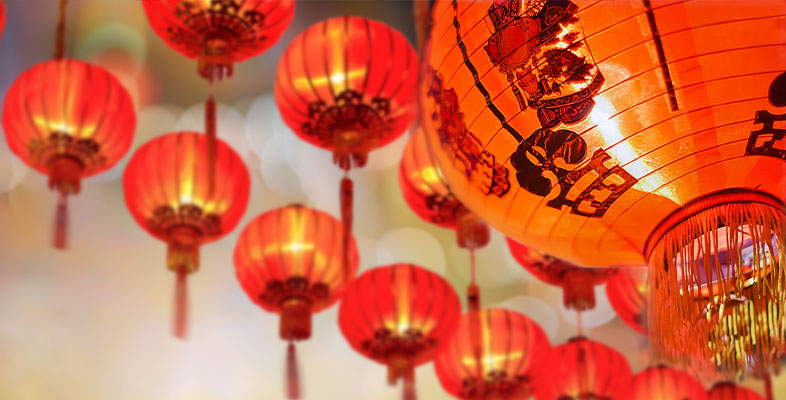5 Numbers from 0 to 99
In Week 1, you heard the numbers from 0 to 5 in Chinese. Here you can listen to them again to refresh your memory.
0 líng
1 yī
2 èr
3 sān
4 sì
5 wǔ
Now listen to numbers 6–10 in Chinese. Listen several times, until you are familiar with them.
6 liù
7 qī
8 bā
9 jiǔ
10 shí
Good and bad numbers
As in most cultures, numbers have specific connotations in Chinese. For instance, Chinese regard eight as a lucky number because it sounds very similar to the word for ‘get rich’ (fā) or ‘good fortune’ in Cantonese. More importantly, eight lies at the heart of an ancient Chinese belief system, built around an eight-sided diagram called 八卦 bā guà. It has often been seen as providing a guide to life and has been applied to contexts as diverse as urban planning and diagnosis in traditional Chinese medicine. Because eight is a lucky number, the 2008 Beijing Olympic Games opened at 8 p.m. on the 8th day of the 8th month in 2008! Four, on the other hand, is not a good number in Chinese culture as 四 sì sounds similar to the word 死 sǐ meaning ‘death’ or ‘to die’.
Activity 7
Listen to this telephone number. Can you write down the number you hear? Listen as many times as you want.
Answer
021 8549 3677
In some northern dialects, when saying telephone numbers, the number one is usually pronounced yāo to avoid confusion between the numbers one (yī) and seven (qī). Telephone numbers are always given digit by digit in Chinese: e.g. 77 would be ‘seven seven’, rather than ‘double seven’.
The numbers 0–99
Once you know the numbers 1–10 in Chinese, it is easy to form the rest of the numbers up to 99. For example:
shíyī 11 (ten one)
shí’èr 12 (ten two)
èrshí 20 (two ten)
sānshí 30 (three ten)
sìshí 40 (four ten)
èrshíyī 21 (two ten one)
èrshí’èr 22 (two ten two)
When you come to read Chinese, you will notice that Chinese people frequently write down numbers in Arabic numerals (0, 1, 2, etc.) – a habit that has become increasingly widespread in recent years. The numeral ‘0’ is used particularly often because the Chinese character for zero (零) is so complicated.
